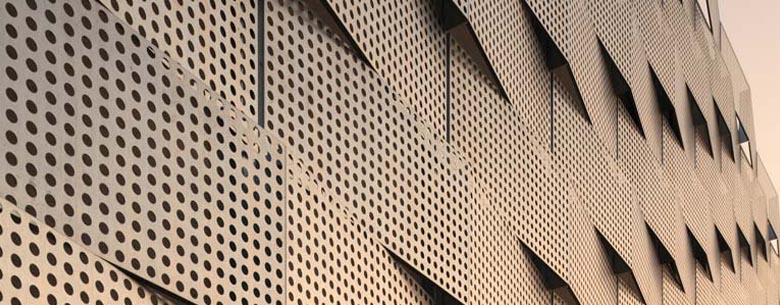Sound Barriers for Apartments Enhancing Acoustic Privacy and Comfort
Living in an apartment can provide a sense of community and convenience, but it often comes with challenges related to noise and sound transmission. Whether it's the sounds of daily life from neighbors or external disturbances, noise pollution can significantly affect the quality of life in multi-unit residences. To address these issues, sound barriers for apartments have emerged as a practical solution to enhance acoustic privacy and improve overall comfort.
Understanding Sound Barriers
Sound barriers, also known as acoustic barriers or soundproofing materials, are specially designed structures or systems used to reduce noise transmission between spaces. In the context of apartments, these barriers help to minimize sound from neighboring units, hallways, or outdoor environments. The principles behind sound barriers involve absorbing, blocking, or dampening sound waves to prevent them from traveling through walls, ceilings, floors, and doors.
Types of Sound Barriers
There are several types of sound barriers that can be utilized in apartment settings
1. Acoustic Panels These wall-mounted panels are made of sound-absorbing materials that help reduce noise reflection and echo within a room. They are available in various styles, colors, and designs, making them a versatile option for both soundproofing and aesthetic enhancement.
2. Mass-Loaded Vinyl (MLV) This heavy, flexible material can be installed on walls, ceilings, and floors to add mass and block sound transmission. MLV is an effective barrier that can significantly reduce noise coming from adjacent apartments.
3. Soundproof Drywall Unlike standard drywall, soundproof drywall consists of multiple layers of gypsum and other materials that decrease sound transmission. This type of drywall is typically thicker and denser, making it a great option for reducing noise in shared walls.
4. Acoustic Underlayment This material is placed under flooring to minimize sound transmission between units. It can be particularly effective in reducing impact noise from foot traffic and can be used under hardwood, laminate, or carpeted flooring.
5. Weatherstripping and Door Seals Many sounds can creep in through gaps around windows and doors. Applying weatherstripping or door seals can help close these gaps, reducing the amount of external noise that enters the apartment.
sound barriers for apartments

Implementation Strategies
Implementing sound barriers in apartments can be approached in various ways, depending on individual needs and budget. Here are some effective strategies
- Identifying Problem Areas Begin by identifying the primary sources of noise in your living space. This could include sounds from neighboring units, street noise, or even sounds you generate within your own unit. Understanding the sources will help you target your soundproofing efforts more effectively.
- Layering Techniques Combining multiple soundproofing strategies often produces the best results. For instance, using acoustic panels on the walls while adding soundproof drywall can significantly enhance sound insulation. Similarly, incorporating acoustic underlayment and area rugs can further minimize impact sounds.
- Professional Consultation For those dealing with severe noise issues, consulting with a soundproofing professional may be beneficial. They can assess the specific acoustics of your apartment and recommend customized solutions tailored to your needs.
- DIY Solutions Many soundproofing methods can be executed as DIY projects. For example, hanging heavy curtains, using bookcases as sound barriers, or creating a wall of plants can all contribute to a quieter environment without the need for costly renovations.
The Benefits of Sound Barriers
Investing in sound barriers comes with numerous benefits. Firstly, it greatly enhances the comfort of your living space by creating a peaceful environment that fosters relaxation and productivity. Additionally, improved acoustic privacy can contribute to better relationships with neighbors, as sound disturbances are minimized. Ultimately, sound barriers can also become an essential selling point for landlords and real estate developers, as potential tenants are increasingly seeking apartments with reduced noise levels.
Conclusion
As urban living continues to grow in popularity, the importance of sound barriers in apartments cannot be understated. By taking proactive measures to enhance acoustic privacy, residents can transform their living spaces into oases of tranquility amidst the bustling city life. Whether through professional installation or DIY approaches, sound barriers are a worthy investment in achieving a peaceful and comfortable home environment.
-
Why Galvanized Trench Cover Steel Grating Resists Corrosion
NewsJul.10,2025
-
The Versatility and Strength of Stainless Expanded Metal Mesh
NewsJul.10,2025
-
Load Calculations in Steel Grating Platforms
NewsJul.10,2025
-
Keeping Pets and Kids Safe with Chicken Wire Deck Railing
NewsJul.10,2025
-
Hole Diameter and Pitch for Round Perforated Metal Sheets
NewsJul.10,2025
-
Aluminium Diamond Mesh in Modern Architecture
NewsJul.10,2025
Subscribe now!
Stay up to date with the latest on Fry Steeland industry news.

